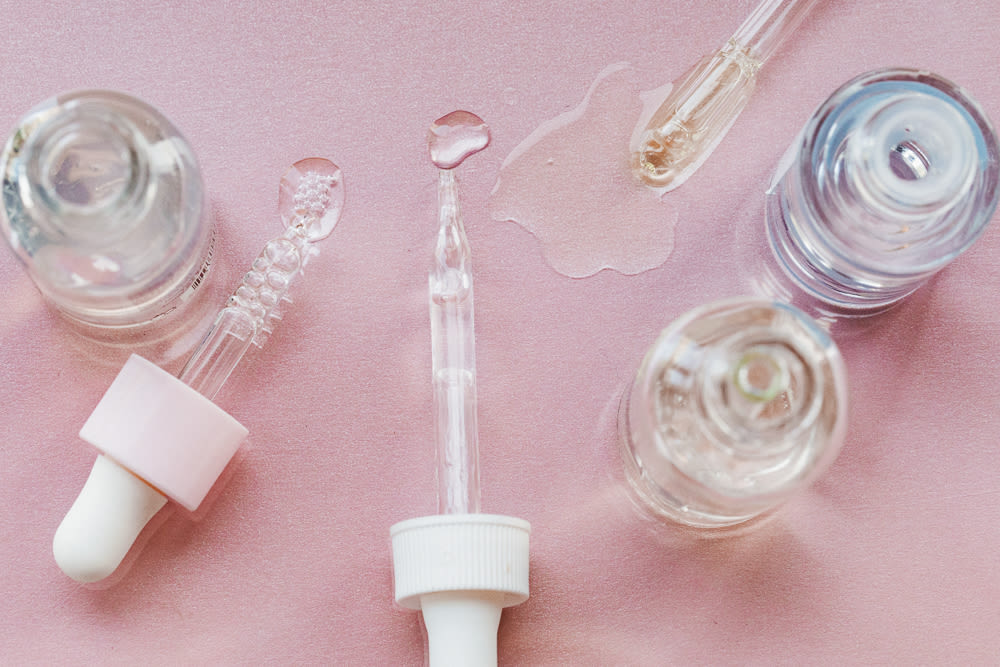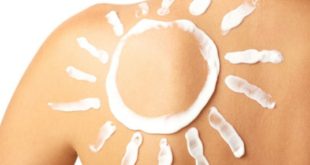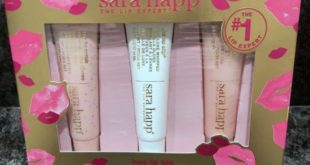
There’s a certain type of person who prefers their greens frozen and liquefied, tasting vaguely of strawberry. Of course, you miss the individual leafiness of spinach, grassy crunch of celery, and bittersweet snap of carrot, but… there’s something to be said about the utility, where in a few quick gulps you get all the benefits of a vegetable-based meal. And while you certainly shouldn’t drink the newest generation of serums, those too are action-packed with potent ingredients that enhance skin in a single step.
These serums work in ingredient combinations that until recently were virtually unheard of: vitamin C and retinol and exfoliating acids…all in one bottle. You might say they have everything but the kitchen sink, effectively taking the guesswork out of which active serums are safe and effective for concurrent use. So, how can all of these powerful ingredients coexist in the same bottle, especially when many of them require varying pH levels to maintain maximum efficacy? For one, recent innovations have made it possible for otherwise incompatible ingredients to play nice. “Niacinamide, salicylic acid, and retinol tend to do well at a pH of around 6, but L-ascorbic acid [a form of vitamin C] does better at lower pHs,” cosmetic chemist Jen Novakovich of The Eco Well explains. However, “some niacinamide ingredients can tolerate a lower pH, and some vitamin C derivatives”—she cites the newer magnesium ascorbyl phosphate as an example—“are stable at a pH 6.”
While a true kitchen sink serum can improve your skin in many different ways at once—tone, texture, its propensity to break out—be wary of imposter kitchen sink serums. Instead of uniting multiple actives to benefit skin broadly, they combine ingredients with too much overlap that hardly help at all. “Many consumers see lots of recognizable ingredients and think the product is better,” Perry Romanowski, one of the cosmetic chemists behind The Beauty Brains explains, “but there is little extra benefit when combining ingredients with the same effects.” Romanowski notes that, for example, while niacinamide, retinol and vitamin C are all brighteners, there’s no evidence to support them forming a super brightener complex when mixed together. Similarly, hyaluronic acid is great for attracting moisture to the skin, but you might not see a real difference between using it alone or paired with glycerin and sodium PCA.
Dr. Chaneve Jeanniton of Brooklyn Face and Eye calls this an “overall dilution effect,” and stresses the importance of reading the labels before giving in to a marketing gimmick. “The highly touted ingredients should be towards the beginning of the ingredient list, and not just present in a trace amount at the tail end.” Another way brands might be tricking you into thinking you’re getting more than you are is through using less-effective versions of the ingredients they advertise: for example, low percentages of retinyl palmitate, retinol’s weaker cousin, won’t replace the shout-from-the-rooftops results of a more potent form of vitamin A. But it’s a balancing act—too many strong ingredients packed at the top of the ingredient list increases the likelihood of developing irritation.
If you are looking to streamline with a kitchen sink serum, you should approach it with skepticism and the understanding that one product still can’t do everything. It can still do a lot! But what are your priorities?
If it’s brightening, a formula that’s built around L-ascorbic acid will be your best route to effective results. “I opted for 15-percent L-ascorbic acid in my Daily Dose serum because that’s the proven sweet spot in clinical research to deliver maximum benefits while minimizing irritation,” explains Dr. Jeanniton, who rounded out the formulation with vitamins C and E, ferulic and hyaluronic acids, and niacinamide. U Beauty’s Resurfacing Compound gets most of its oomph from vitamin C, hyaluronic acid, and three forms of exfoliating acids. And a budget option is Naturium’s Vitamin C Super Serum Plus, which boasts high levels of L-ascorbic acid, niacinamide, and salicylic acid, making it good for those prone to breakouts.
On the other hand, if you’re interested in replacing your retinol with a souped-up version, look to the customizable, prescription-only kitchen sink Super Bottles from Curology, which can contain powerful tretinoin along with antibiotics and azelaic acid in a single pump. Or, try Dr. Dennis Gross’ Ferulic + Retinol serum, which pairs active retinol with ferulic, glycolic, salicylic, mandelic, and hyaluronic acids to make a reparative, hydrating, skin-smoothing powerhouse.
If your skin is already used to lots of actives, the only difference you might notice is a shorter routine. But if kitchen sink serums are your first point of entry to a cornucopia of powerful ingredients, remember to start slow and work up to daily use over the course of a few weeks. Either way, now that you’ve eliminated three or four products from your lineup, you’ve got extra time for sunscreen—right?
—Ali Oshinsky
Photo via ITG



